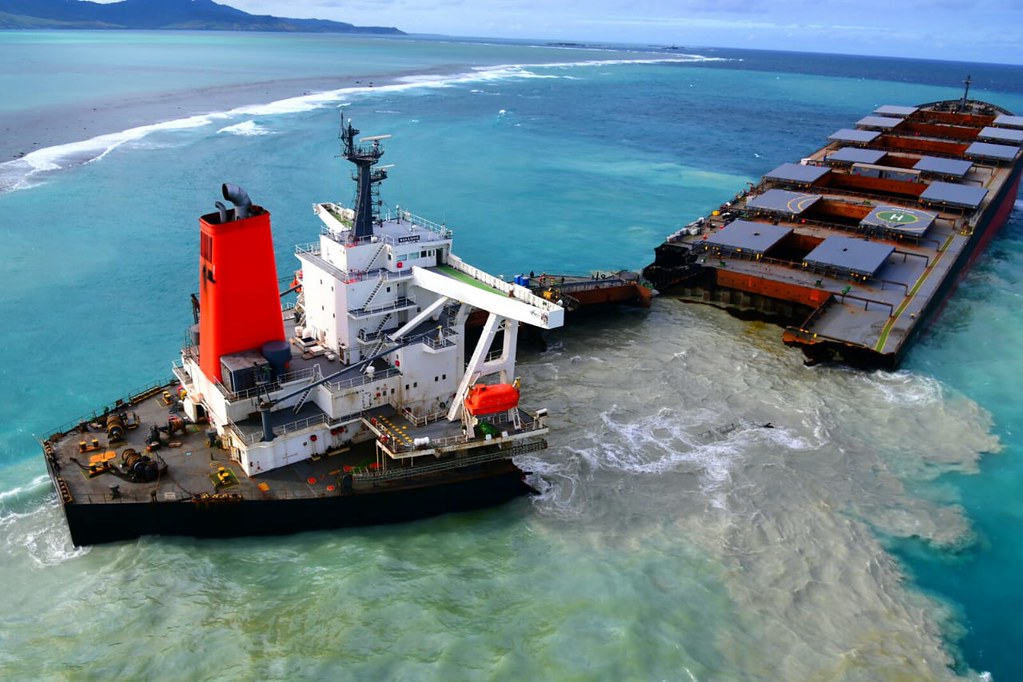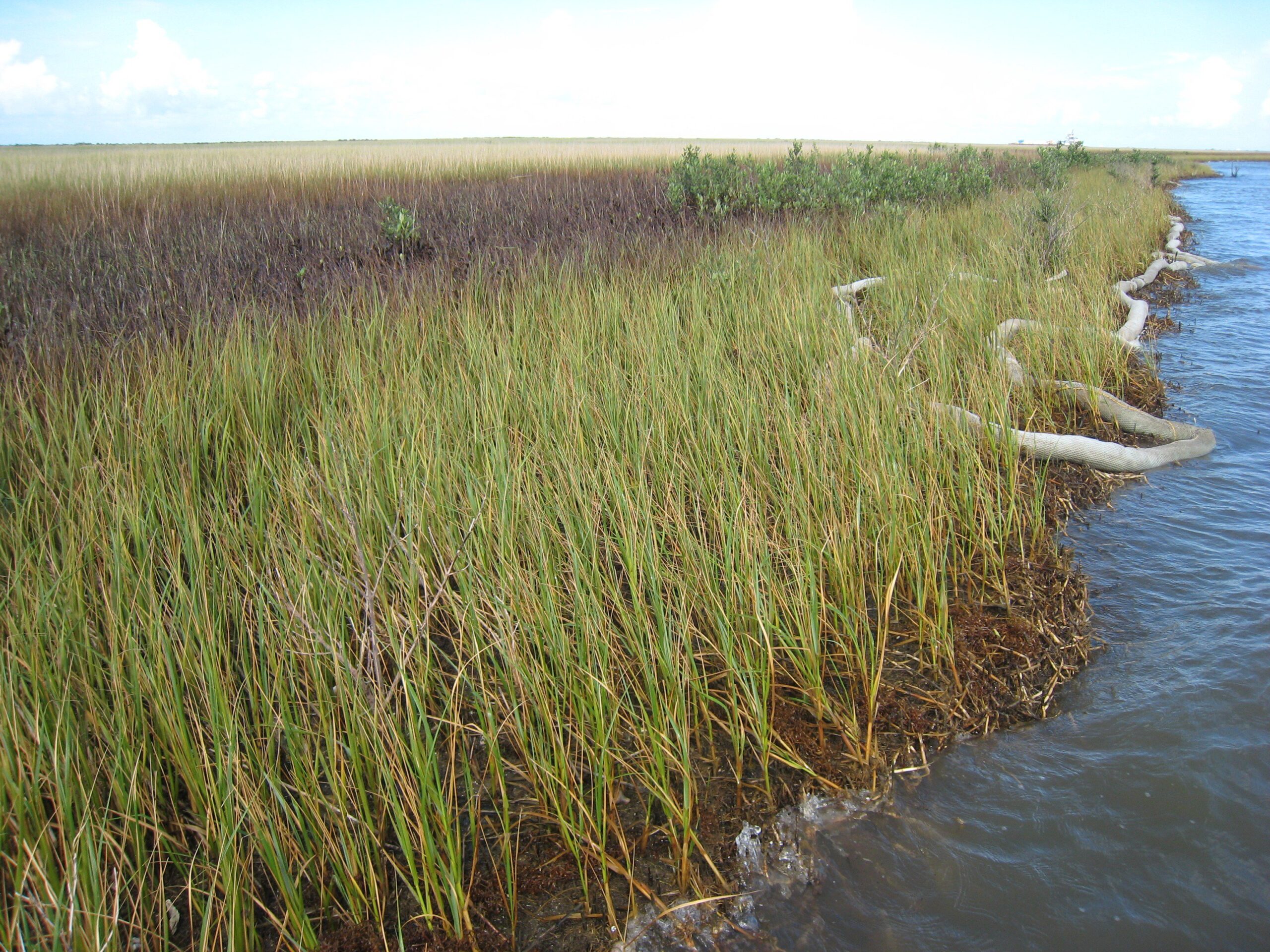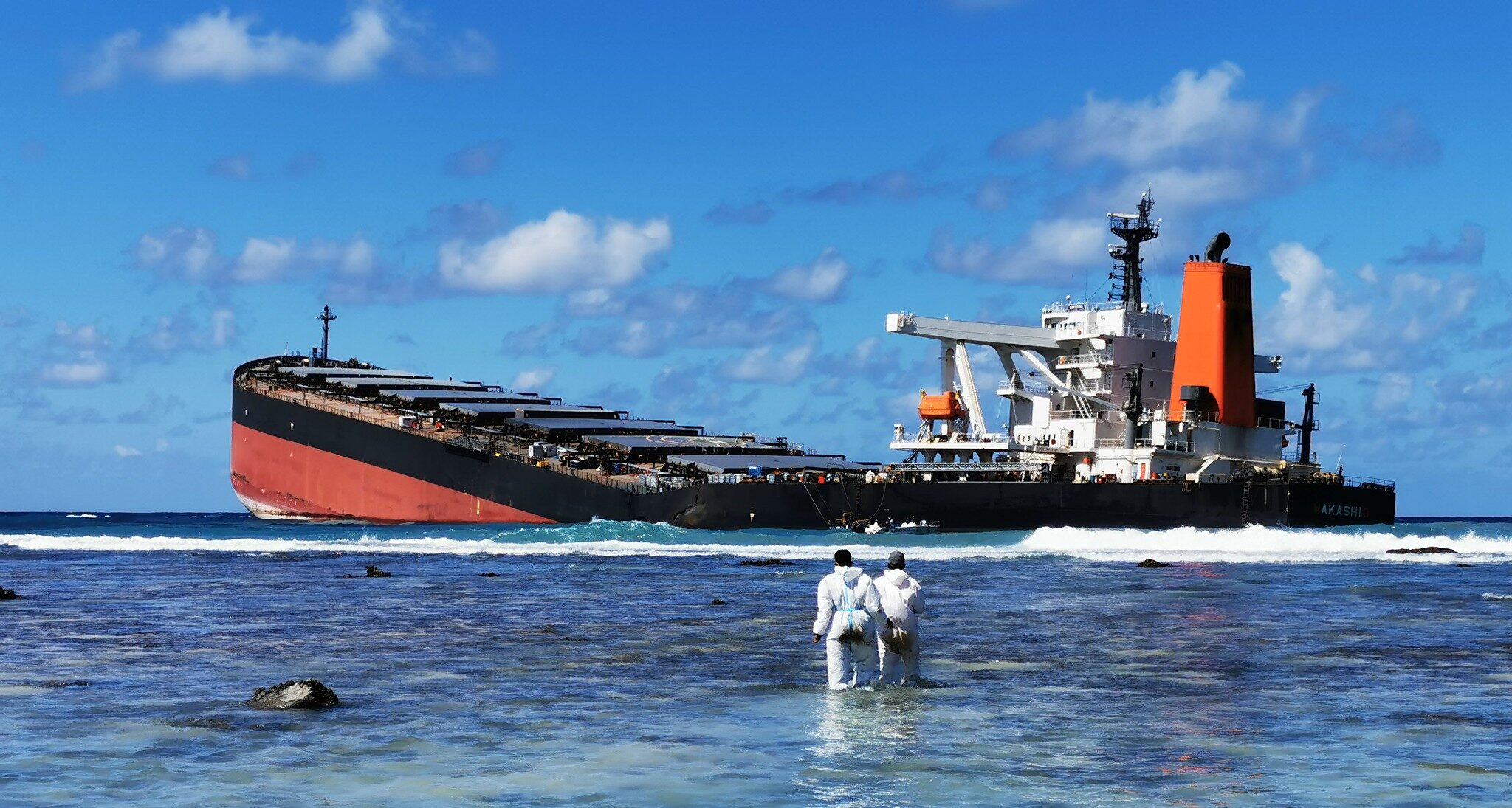What’s Next for the Mauritius Oil Spill?
As the disaster in Mauritius continues to unfold, Chris Robbins offers lessons learned from BP oil disaster just ten years ago

On July 25, the MV Wakashio was grounded on a coral reef off the coast of Mauritius. Since then, the ship has released 1,000 tons of fuel into the sea, where it has fouled the region’s biologically rich waters and coastlines.
The unfolding oil disaster in Mauritius is sadly and predictably all too familiar to me. Last month we commemorated the 10th anniversary of the capping of the BP-owned Macondo oil well in the Gulf of Mexico. 11 workers lost their lives when the Deepwater Horizon mobile drilling platform suffered a catastrophic blowout on April 20, 2010, discharging 210 million gallons of oil into the Gulf of Mexico for 87 days. In the days after the blowout, I was on the water surveying the damage, talking with frightened fishermen and preparing for the largest coastal and marine restoration effort ever undertaken.
My heart goes out to the Mauritians. I understand the shock, anger and anxiety they feel about the oil smothering their reefs and wetlands and taking a toll on their health, economy and way of life. I offer the following lessons learned from the BP oil disaster in the hopes they provide some useful perspective to those involved in the Mauritius response and eventual ecological restoration that must follow.
Avoid collateral damage from clean up methods
In the desperate rush to contain and clean up the oil, response techniques can inadvertently cause additional environmental harm if not deployed appropriately. Responders used 2,556 miles of boom to contain oil and protect sensitive shoreline habitats during the BP oil disaster. Yet, waves resulted in the stranding of hard boom and sorbents along hundreds of miles of shoreline that took months to remove. Mauritians are using their ingenuity to make natural booms made of hair, commendably minimizing the use of synthetic materials made of plastic. Regardless of the material used, close monitoring of booms along with changes in the weather is important to avoid unintended environmental consequences.
Catalog the environmental and economic harm
While the current priority is rightfully on oil containment and removal, documenting the damage to the marine and coastal ecosystem is critical to holding the responsible party accountable and seeking damages. Wherever possible, it is important to establish a pre-oil disaster baseline of environmental conditions against which surveys of damaged habitat, species and ecosystem services can be measured. Comparing historical records of fish, bird, reptile and marine mammal presence and abundance with post-oil disaster surveys will help to isolate the oil spill impacts. The same is true for assessing lost ecosystem services such as tourism or fisheries landings so foundational to the island’s economy.
Oil impacts can reverberate for years

Hold responsible parties accountable
The party responsible for the Mauritius oil disaster should be legally and financially accountable under applicable international and domestic law and pay for the cost of cleanup and subsequent restoration efforts. Presenting a claim based on the cataloging of environmental harm and economic damages resulting from lost tourism and fishing revenue will help fund environmental restoration and compensate affected businesses. Making the environment and public whole from the oil disaster should be the top priority, and a claim prepared with the best available science will help ensure compensation is commensurate with impacts. Keeping the public informed through traditional and social media will keep the disaster in the news and the pressure on the responsible party to pay a claim.

Develop a restoration plan, beginning now
While restoration cannot practically begin before clean up is complete, it is not too early to begin planning for it. Restoration should be ecologically integrated, adaptive and responsive to new insights about ecosystem harm and allow for early and continuous public involvement. The Deepwater Horizon oil spill restoration planning process was not perfect, but it identified goals and objectives tied to injuries at the resource and ecosystem level and gave the public opportunities to provide input.
The people of Mauritius are experiencing what too many communities, from Louisiana to Alaska to the Timor Sea have painfully faced. Ultimately, we must transition rapidly but responsibly from fossil fuels to renewable forms of energy that are not toxic to the environment and have a fraction of the carbon footprint. Our oceans and ocean-dependent communities deserve nothing less.